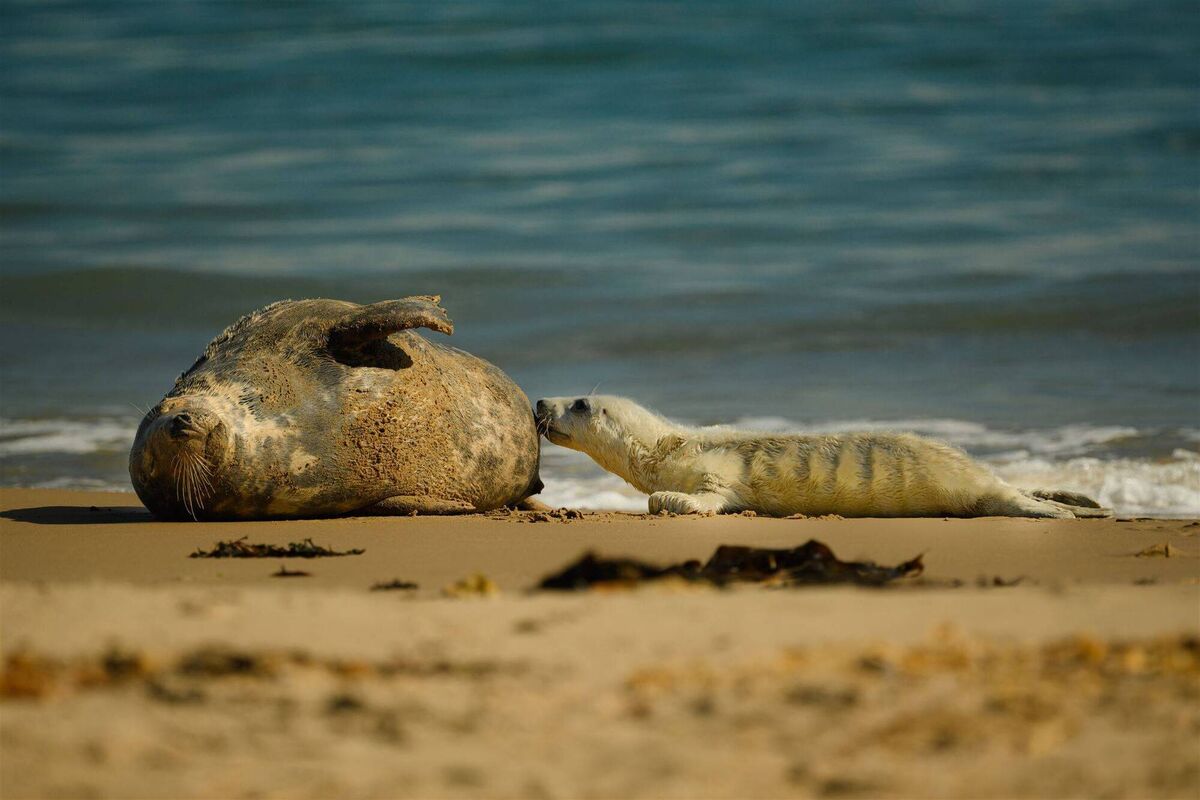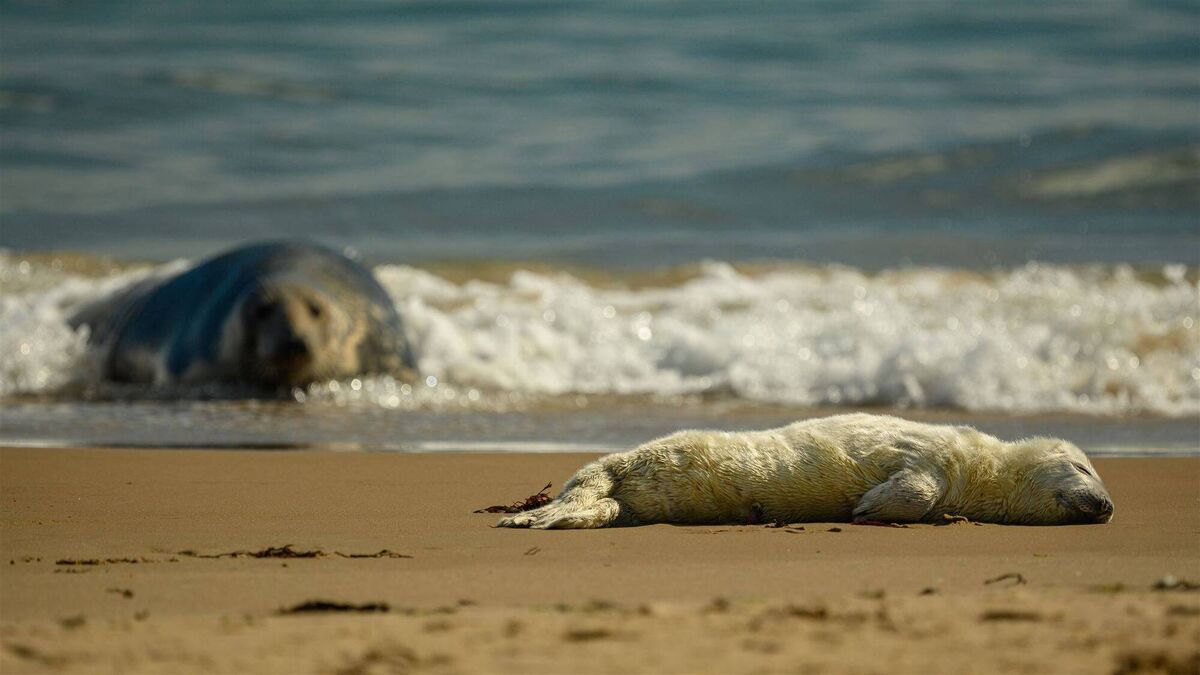Well-meaning baby seal rescuers 'could do more harm than good'

Wild seal pup which Seal Rescue Ireland was monitoring but did not need to rescue). Pictures: Chris Parkes
They're small and ridiculously cute looking and it's cold out there on beaches and rocky coves so when people spot a baby seal on land, they think it is in distress.
But well-meaning rescuers of baby grey seals could end up doing more harm than good if they don't have proper training on what to do.
It's pupping season — the time of year when baby Grey seals are born — and Seal Rescue Ireland (SRI) is already inundated with calls from people concerned about baby seals on windy beaches.
Melanie Croce, executive director of this Wexford-based charity, says that since August this year they have had well over 150 reports of potential seals in distress.
But she adds that when the trained network of volunteers looked into the incidences, they only ended up needing to tend to around 30 of these: "And one of those probably wouldn't have needed our attention at all only that the person had tried to rescue themselves and brought it home."
There are two types of seals at Ireland's coastline: Common seals, which breed in the summer; and Grey seals, which typically have pups between August and January.
Newborn Grey seals weigh about 15kg (33lb) and need to stay on land for the first three weeks of their life while they get their weight up to around 50kg (110lb) — their mother visits them regularly to feed them while they build up their fat stores and develop their waterproof coat.
This is often when walkers spot the pups with their fluffy white coats and may even try to 'return' them to the water, which actually endangers them.

Indeed, only around 50% of baby seals born here survive, and each adult female only gives birth to a single pup each year, which has impacted on population numbers.
Other factors affecting seal numbers include climate change, coastal erosion, dangers in their habitat — such as dogs — and human factors such as food source depletion and dumped plastic and fishing materials.
"Storms are getting worse and more frequent so they have a tougher time now but one of the worst dangers seals encounter is discarded plastic which they think is a food or when they get entangled in monofilament recreational fishing line or commercial nets."
Dogs can scare a mother seal away from her pup or cause them serious distress. "And seals are genetic cousins of dogs — as well as bears and weasels — so there is a risk of disease transfer to your pet too so definitely keep your dogs away from seals."
So how close is a safe distance?
At least 100 metres is recommended: the general rule, according to SRI, is if a seal is reacting to you in any way, then you are too close.
"And if the seal actually goes into the water to get away from you then you may have done some real harm," notes Melanie.

"So, if you see a seal pup on its own, stay a safe distance away and scan the water to see if the mother is close by. And call our rescue hotline — we have rescued around 1,000 seals in the past decade and have a list of 800 trained volunteers who will monitor the situation."
Seals absolutely love herring, but stocks have diminished in recent years and as opportunistic feeders they will also eat sand eels, squid, crabs and octopus.
"They don't typically eat seabirds but we have had rescued seals pass some feathers so they would occasionally scavenge. Thankfully though we haven't seen an impact from dead birds killed by bird flu so far, but we are monitoring that situation," said Melanie.
And other good news for wildlife lovers who are keen to do their bit in helping seals is that SRI is looking for rescue network volunteers — and you can be based anywhere in the Republic of Ireland "even in the midlands!".
Sign up for a training session here.
If you're not in a position to be a volunteer, you can still get involved: the centre in Courtown is open to visitors year-round for educational tours.
"And we view everyone who comes to visit as a 'future conservationist'," says Melanie. She's proof of that herself: she was an intern when SRI was based in Dingle. Then when they moved to Wexford, she ended up moving east also and is now executive director of the organisation.








